Americans have been mixing it up for a while now. And here in the UK brewers are also starting to get creative.
With the rise of craft beer — as well as the ripple effect from the movement towards local sourcing and provenance — there is certainly now more awareness of the variety of drinks styles available in this country.
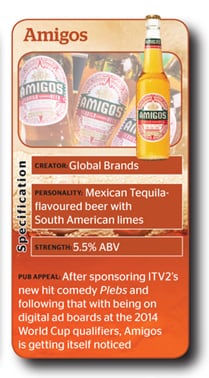
UK beer sales in pubs were down almost 50 million pints in the first quarter of this year, yet the premium lager category continues to grow at more than 8%, according to the British Beer & Pub Association (BBPA).
What this tells us is there has been a shift in preference of beer style — a shift that, as a licensee, it would be silly to overlook.
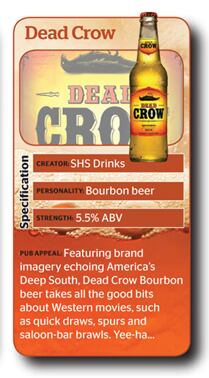
Global Brands marketing director Simon Green points out that it’s actually “good news for spirit-flavoured beers, and the emergence of the spirit-beers category, which looks set to be a profitable sub-sector of premium lager along with world beers, European lagers and ‘sunshine beers’.”
Darryl Hinksman, head of on-trade customer marketing Heineken agrees, noting that the dip in beer sales coincides with consumers increasingly looking for new, value-for-money drinking experiences, while in the meantime premium packaged lagers (high-end bottled beers) remain “one of the most buoyant sectors, worth more than £2.5bn and growing at more than 8% in value”.
He says this growth is primarily being driven by two buoyant sub-sectors — spirit-flavoured beers (‘speers’) and world beers.
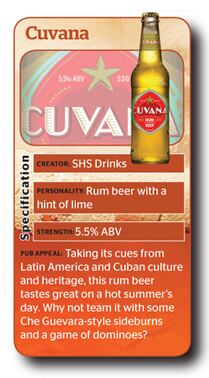
“There has been a huge influx of speers in the past three months, with some producers trying to claim development of this new and emerging sub-category as the next big thing,” says Crawford Sinclair, UK director of sales at Innis & Gunn.
But, although the likes of Innis & Gunn have been getting inventive for some time, it seems like it is only now that the rest of the industry has woken up to the opportunity that such styles present.
“We need innovation badly to reach out to new drinkers, and to stop beer being seen as daddy’s drink, a middle-aged bevvy, or indeed a drink just for men,” says Rupert Ponsonby, joint founder of the Beer Academy.
“Beers aged in wood, or spirit beers, are a sign that the beer industry is loosening up and letting creativity run wild. Think of 1971, when the Campaign for Real Ale [CAMRA] was formed, and there were fewer than 10 bottle-conditioned, live, un-pasteurised beers left in the market. Jeff Evans’s Good Bottled Beer Guide now lists more than 1,800.”
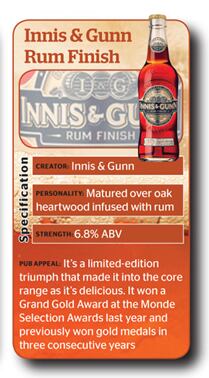
Charlie McVeigh, proprietor and managing director at pub chain Draft House, says that “there are two separate types of drink being talked about here.
One is beer that has been stored in a traditional way and aged or matured in oak barrels that used to contain spirits or sherry, which over the course of time added hints of flavour — this is nothing new. The other is a beer that has had spirit mixed in with it”.
McVeigh freely admits that he thinks the former is interesting, but that the latter “sounds like an alcopop.
Where I draw the line is the pre-mix beer and spirit. I think it sounds tacky. Maybe I’m a snob. I love Tequila, rum and Bourbon, but I don’t see why it should be poured into a beer. I’m sure there’s a market for it though”, says McVeigh.
And, according to Green at Global Brands, the market is expanding because people are always looking for something new.
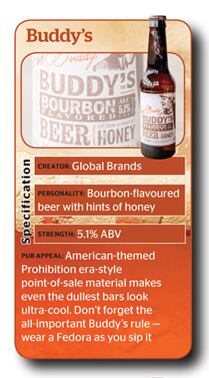
“Spirit beers are experiencing more than 90% growth in the on-trade because consumer tastes have evolved and people want to be seen with new, exciting brands that look and taste great,” he says.
Hinksman concurs and says that the interest in spirit beers can be attributed to the expansion of consumers’ drinking repertoires, which has made them more willing to experiment with new brands and flavours.
“They [younger generations] are more ‘well-travelled’ than previous ones and likelier to seek drink concepts from further afield. They are increasingly looking for products that offer an added benefit as part of a premium drinking experience.”
But will speers ever be taken seriously by the beer industry?
According to Mark Hopper, head of innovation and development at SHS Drinks, “speers are a new sub-sector” and have already begun to “appeal to a new audience”.
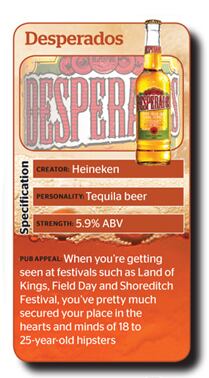
They have managed to make beer “fun without being funny” — admittedly broadening the demographic for beer, something the category has struggled with in the past. It is also enjoying success.
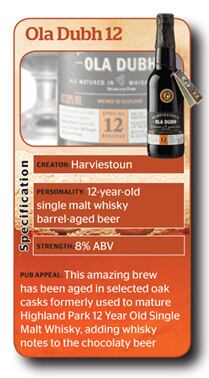
Nicola Rae, senior commercial buying manager at Luminar Group says: “Desperados has been incredibly popular with our customers, growing steadily since its launch last summer. It’s now our number four-selling beer, behind the mainstream Budweiser and Stella. In fact, in some areas it is knocking on the door of its sunshine-beer competitor Corona, with a number of clubs rating it their number one or two-selling beer brand.”
But there are three elements to selling speers, according to Hopper: “Creating a display, sampling, and grouping them in the chiller,” he says, showing there is still some work to be done to get people interested, but that so far “the response has been positive”.
“Do I approve?” asks Ponsonby. “Yes. It shows hops, barley and other cereals in a new light and creates flavours probably not seen in beer for hundreds of years — but in a fresher, more vibrant fashion.
“And with the number of UK breweries rising from 300 to more than 1,100 in the past 10 years, there’s so much spirited innovation still to go.”
